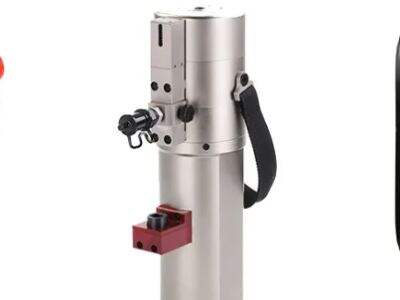こんにちは、若い読者たち!今日は科学と使用についてお話しします——ハイドロリックツールを安全に扱う方法です。これらは非常に特別な機械の一つで、重いものを持ち上げたり移動したりするために使用されるハイドロリックツールです。最高のハイドロリック設備を作る会社の一つは Hangzhou Naizhun 他の言葉で言えば、彼らは自社のツールを使用する際のラムセーフティーヒントを提供したいと考えています。

ハイドロリックツールの使用方法:
油圧機器を使用する前にマニュアルを読んでください。あなたは今までにマニュアルの目的について考えたことがありますか?本質的には、そのツールを正しく使用し、安全に操作するための指示です。それに従うべき重要なルールがいくつか記載されています。
使用している油圧機器に適した正しい油圧オイルの仕様を使うことが重要です。間違った液体が少しでも混入すると、材料が割れたり、装置が故障したりすることがあります。お茶の葉のように特定のものを使用してください。
油圧工具を定期的に点検し、損傷の兆候がないか確認してください。ひび割れや漏れ、部品の破損がないかチェックしましょう。もし一部に損傷が疑われる場合は、すぐに新しいものと交換してください。作業中の安全性を確保するために重要です。
清潔な作業環境を保ちましょう。散らかったままだと、エリアが詰まりやすくなり、事故や転倒につながる可能性があります。表面に均等に落ちない場合もあります。道具はきちんと片付けてください。 トルクレンチ 作業が終わったら、要素を離しておき、壊れないようにしてください。
どんな油圧工具を使用する際の『やっていいこと』と『やってはいけない事』のリスト — ドゥーズ アンド ドントーズ
守ること:
必ず安全手袋とゴーグルを着用し、キャップや安全帽などをかぶってください。これにより作業中の怪我を防ぐことができます。
仕事に適した正しい道具を使う必要があります。高負荷の場合、適切な油圧工具を使用してください。
工具をオフにした状態で調整を行ってください。事故を避けるために非常に重要です。
高圧の油圧システムには最大限の注意が必要です。これらのシステムは誤使用によるリスクが高いので、倫理的に正しく使用してください。
しないでください:
損傷または摩耗した工具の適切な使用方法 破損した工具は 油圧レンチ 転倒やけがにつながる可能性があります。
その工具の指定された許容圧力範囲内で使用してください。各工具には圧力容量の限界があり、それを超えると問題が発生します。
経験 不適格であるのに油圧工具の修理を試みないでください。修理資格のある人に依頼してください。
不均一な場所では油圧機器を使用しないでください。また、彫刻品が完成した部分から事故や損害を防ぐことも重要なので、安定した表面で作業してください。
技術者から学ぶ:
次に、実際に何を話しているかわかるときのジョン、つまり油圧工具のプロについて少し距離を置いて紹介します。何年にもわたり、ジョンは人々の実装を手伝ってきました。彼は多くの問題に直面し、その道程でさらに多くのことを学んできました。この投稿では、ジョンがいくつかのベストプラクティスを詳しく説明し、間違いを避ける方法や工具をより効率的に使用する方法をお伝えします。 ボルトテンショナー .
ジョンのアドバイス:
ジョン:重要なのは、常に仕事に適した正しい道具を使うことです。非常に重いものを持ち上げる際には、汗をかくほど頑丈な油圧ポンプを使用すべきです。しかし、大きな作業で小さなポンプを使ってしまうと、その小さなポンプが故障する可能性があります;小さなポンプは事故に巻き込まれるかもしれません。そして、定期的に道具の精度を確認し、それらが引き続き適切であることを確認してください。
油圧工具 — 問題と解決策
ジョンによる二つの油圧工具の解決策 ジョンが直面した二つの状況と、彼がどのように対処したか。
例1:
電話が止まらない:顧客の油圧ポンプが動作しなくなった。
ジョンの解決策:
メイズ:彼は顧客に液体をチェックするよう指示します。システム内に液体があり、それが汚れていない場合、ポンプは正常に動作します。その後、彼は彼らに油圧液を交換し、まだ問題がある場合は再度連絡するように指示します。
例2:
油圧工具からの液体漏れ。
ジョンの解決策:
ツール内の壊れたまたはずれた接続も彼によって適切に検査されます。彼はバグを見つけた場合、すぐにデバッグできます。外部の破損がない場合は、さらなる検査のためにお客様にツールを持参してもらうよう依頼します。
